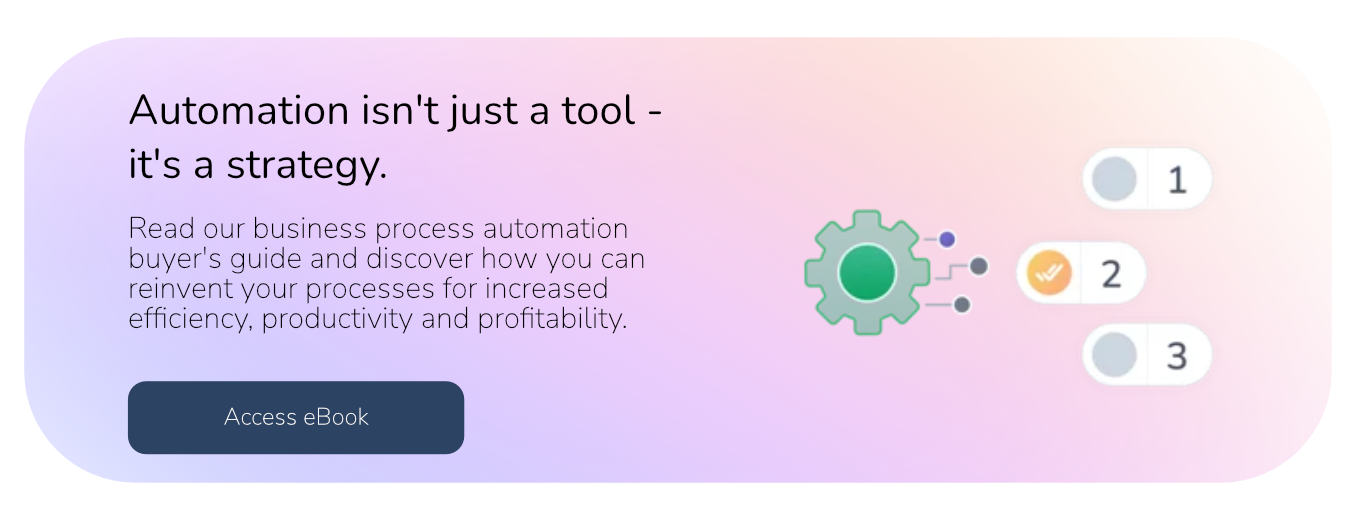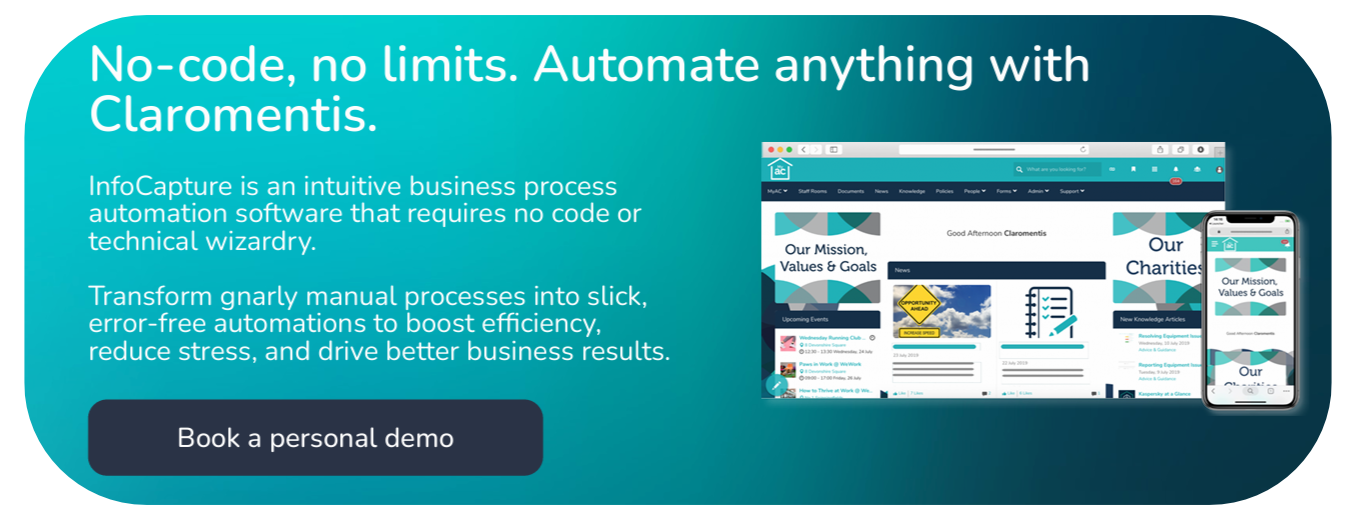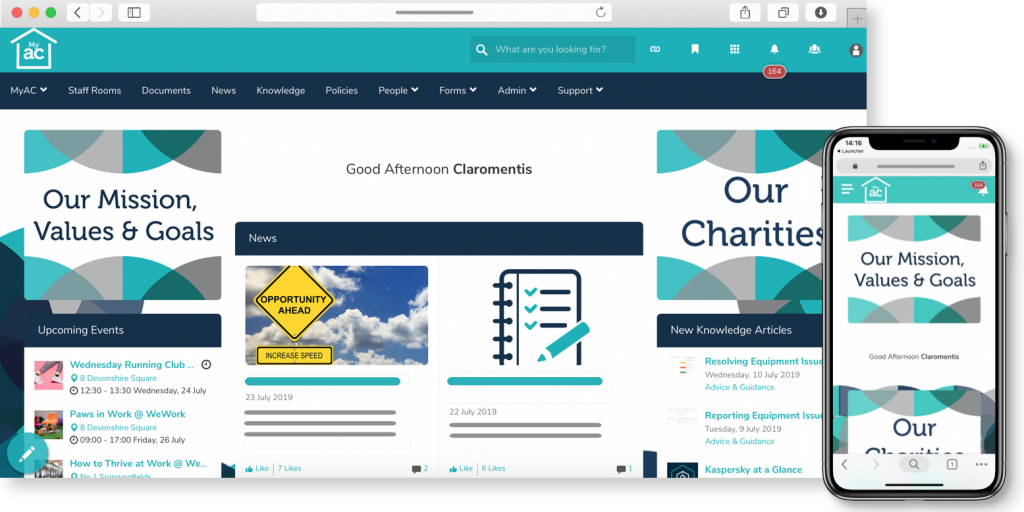When it comes to business processes, you can throw the phrase ‘if it ain’t broke, don’t fix it’ out the window.
Even if your processes aren’t technically broken, that doesn’t mean they’re without fault.
For example, imagine you own a software company. Like most software on the market, your product contains the occasional bug; this is to be expected and most of your customers won’t begrudge you for it.
However, if your customers have to hop on a phone call to submit a ticket and then wait for you to route it to a developer, this can cause problems. The inefficient nature of the phone call, coupled with the ad-hoc routing process, can impede the customer service experience and lengthen the resolution time.
Though these may seem like mild inconveniences, they can build up overtime. And, if you’re not careful, your unoptimised process could then result in bigger, more damaging problems – customer churn and lost revenue, to name a few.
This is where business process improvement becomes a necessity.
What is business process improvement?
In short, business process improvement (BPI) refers to the strategic effort of optimising the effectiveness, efficiency and end-to-end flow of your processes. Unlike business process management (BPM) – which aims to improve processes as a whole – BPI targets one specific process at a time.
The first step of BPI is to identify which process is in need of optimisation. When tackling this, let your overarching business goals guide your decision. For many organisations, these objectives are often similar.
Indeed, according to a recent survey, the top 5 operational priorities for process management teams are:
- Improving performance
- Ensuring quality and consistency
- Optimising resource utilisation
- Reducing costs
- Boosting revenue
Any business process that impedes these goals could be fair game for an improvement. For example, consider the tedious bug reporting process we suggested earlier.
How can automation help with your process improvement efforts?
While it’s possible to improve your processes entirely manually, think of the strain this could have on your teams. (Especially if they have to work harder and longer to get better results.)
To improve your processes sustainably and without burning out your employees, rely on standardised e-forms and business process automation wherever possible.
Automating even the most simple of processes can produce significant results. Indeed, according to a recent report, 95% of IT decision makers have seen an increase in business productivity thanks to automation. In addition to this:
- 95% say automation has helped their organisation to achieve operational efficiency.
- 94% say automation has improved customer experiences.
8 automated business process improvement examples
Now that we’ve covered why business process improvement – and automation – is critical to your company’s success, let’s explore 8 tangible examples.
1. Customer invoice requests
When deciding which process to automate, frequency and impact are two of the biggest determining factors. This is what makes customer invoices a great contender for your first automated business process improvement.
Customer invoices are a business-critical and high-volume process. Each invoice follows the same repeatable steps with just a few contextual differences.
Transforming this process into an automated e-form will standardise and centralise your billing activities. With automated status updates and notifications, your finance team can know exactly when an invoice is pending, sent, or processed. This way they don’t miss any crucial invoicing deadlines. Better still, they don’t have to spend hours creating manual documents alongside their other important tasks.
2. Purchase order processing
Purchase requisitions are another high-volume process. They can also be high-emotion, too. If you forget to process an employee’s purchase order, they may miss out on a valuable training course or piece of equipment.
An automated process empowers your employees to submit purchase orders autonomously. The form automatically calculates the total of the items listed and then, upon completion, routes it to your finance department. Your employees can then track the request as it journeys from pending to approved.
3. Customer support and ticketing systems
Making improvements to your customer support workflows is a surefire way to boost satisfaction and retention rates.
At Claromentis, we harness the full potential of our digital workplace solution to provide a 24/7 support portal to our customers. As well as offering informative self-help articles and e-learning courses, the portal also contains an automated ticketing system. This allows customers to report issues whenever they arise and track them from submission through to completion.
The workflow itself automates ticket assignment, status updates, SLA notifications and more. This ensures no ticket falls through the cracks.
4. Inventory management
Efficient inventory management is fundamental to the financial health of your company. Without an accurate overview of how many products or materials you have in your warehouse, you may oversell or undersell, cause shipment errors, or render stock obsolete.
Improving your inventory management process via automation ensures you have accurate data to work with. Smart conditions mean your stock count can automatically update in real time, based on new orders and shipments.
5. Compliance audits
Preparing for internal compliance audits manually can be a headache to say the least. Without a centralised system for tracking procedures, storing documentation, and keeping records, it’s all too easy to get lost in the weeds.
To simplify the process for your quality and compliance management teams, create templates that allow you to schedule and assign regulatory procedures to your team members. Using automated notifications and status updates, you can keep your process transparent and trackable, making it easier to pass your audits smoothly.
6. Data access requests
On the topic of compliance, you can also streamline more specific regulatory procedures such as data access requests.
An automated access request form:
- Ensures only the right employees have access to your sensitive information.
- Speeds-up data access so employees can fulfil their duties as quickly as possible.
- Reduces bottlenecks and eradicates tedious manual processes.
7. Mortgage applications
Mortgage applications are often very time-consuming, with customers needing to answer a long list of questions before their advisor can even get the ball rolling.
For many customers, this initial step can be off-putting. Particularly if they have to visit their local branch or sit on a long phone call.
Translating these questions into a digital e-form is a more convenient and effective way of managing the process. With dynamic conditional fields, you can ensure that each customer only sees the questions that are relevant to their situation. Once they complete the form, your financial services team will receive an automated notification to progress the application. All in all, this speeds up the workflow and enhances the customer experience.
8. Internal idea generation
Looking to boost innovation and cross-team collaboration? An idea generation workflow could be a great way to keep your employees on their toes.
For instance, you could create a marketing idea form on your company intranet where colleagues can suggest blog topics, social media ideas, or email campaigns. Your marketing team can access a list view of these ideas and automatically update each task when it enters their workflow.
Follow a continuous improvement approach
‘To improve is to change; to be perfect is to change often.’ – Winston Churchill
The ideas we listed are only a taste of what you can achieve with an automated BPI approach. When it comes to determining your next initiative, you can go as general or as specific as you wish.
Other ideas might include:
- A complaints system
- A volunteer application
- A return to work process
- A tax return form
No matter where you venture next, just remember that your improvement journey should be ongoing. Analyse your processes regularly, assess what isn't working, and improve them wherever you can. Only then can you achieve peak operational efficiency.
To help you with this continuous improvement approach, we recommend adopting an integrated digital workplace solution like Claromentis.
Our platform brings your people and operations together into one single source of truth. With our built-in business process automation tool, you can construct bespoke, automated workflows for any process – no matter how complex. This allows you to improve every corner of your business and lay the foundations for sustainable success.
If you’d like to see how Claromentis can help you scale up your BPI efforts, book a personalised behind-the-scenes demo with our experts.



